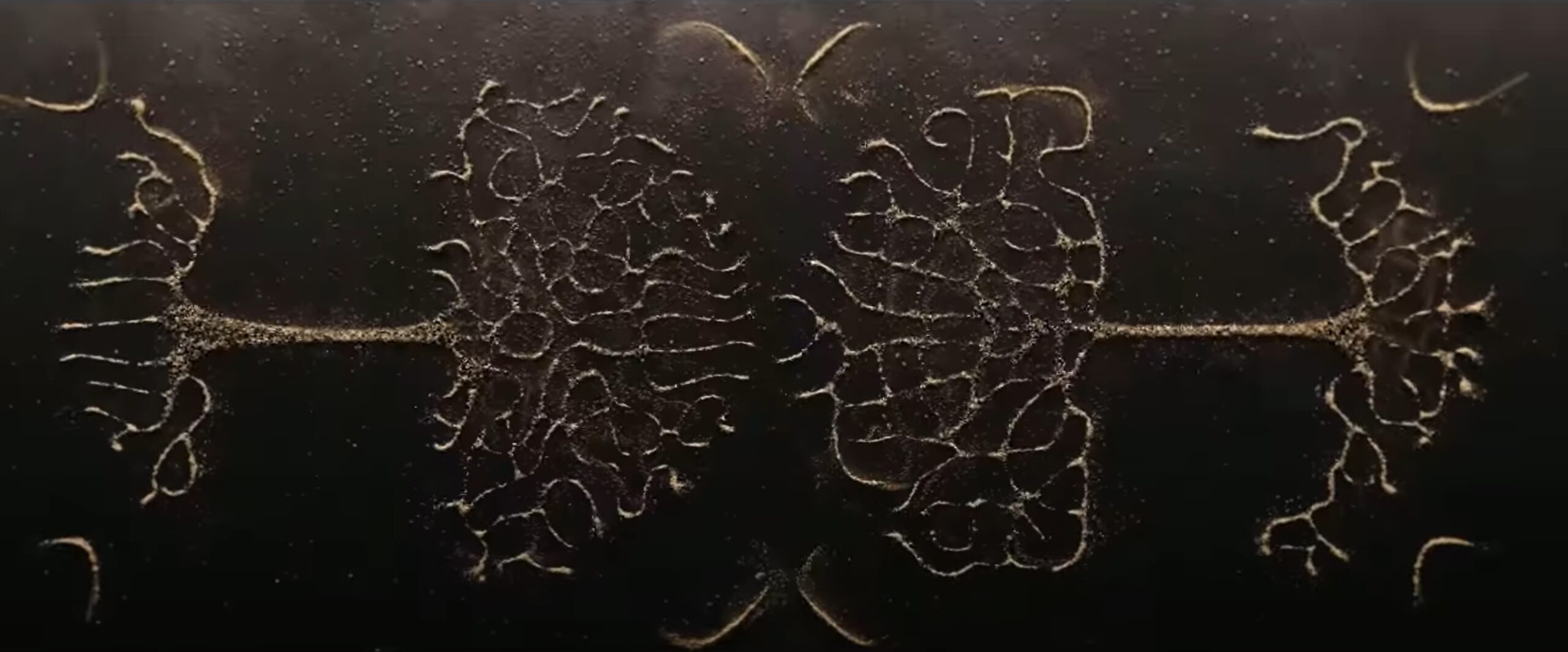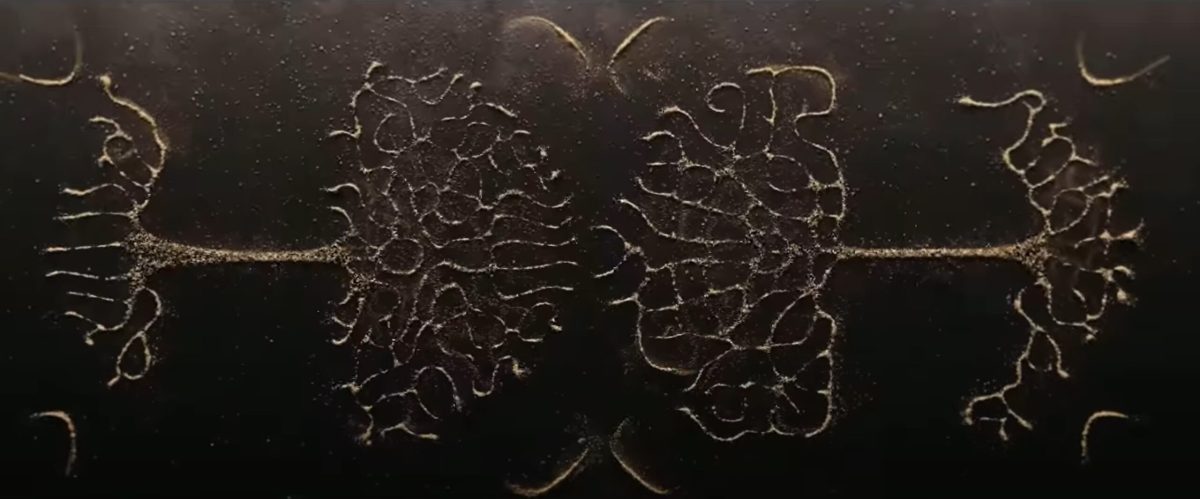If Game of Thrones is any indication, main title sequences are especially important for fantasy TV shows. When Amazon decided to put loads of money behind a Lord of the Rings show, it seems only natural that Rings of Power would need to have an excellent main title sequence. In the case of Rings of Power, main title creators Mark Bashore and Katrina Crawford had to find a way to build something that felt in line with the second age of Middle Earth, which is where the show is largely set.
In speaking with Variety, Bashore said that Crawford was the one who came up with their initial idea for the main titles. “She came up with this idea of portals into other worlds,” he explained. “You have 90 seconds or sometimes less to transport people psychologically into a place where they’re ready. And it’s oftentimes the only thing that lives across seasons and seasons. Everything else changes. The directors, the writers, the shows change, but the one thing is that portal.”
Songs have always played an important role in Tolkien’s world. Several of those songs made it into Peter Jackson’s Hobbit and Lord of the Rings films, but there are even more embedded in Tolkien’s text. In fact, Tolkien claims that his world itself was formed by the songs of angelic beings. Ultimately, Bashore said that they wanted the opening title sequence to come from the world of sound, instead of the world of film. It was this motivation that led them to explore the science behind cymatics.
Making sound a visible entity
First, working in concert with their team at Plains of Yonder, Bashore and Crawford built out a cymatics kit at home so that they could play around with it. Crawford’s Ph.D. in microbiology came in handy, and she discovered that the sand they were doing did remarkable things when it was placed on their kitchen table and was responding to Gregorian chants. The vibrations from those chants, when close to the sand, causes it to move and form different patterns. Crawford filmed the effect with her iPhone and then slowed it down. Once they saw that video, they knew they’d found the effect they wanted for the main title sequence.
As they continued to experiment, they tried a wide variety of different materials and sounds. They knew that, eventually, the movements of the materials would have to be paired with Howard Shore’s opening title theme, but that didn’t limit them in this phase of the process.
When they actually filmed the opening titles, they used grains of sand of various sizes and played a single Hz tone from a computer tone generator. Every frame of the title sequence was filmed this way initially, and then later cleaned up with the use of CGI. The finished effect was the idea that the sand was creating an entire world through sound. As Crawford explains:
But then it becomes this bigger thing. And there are so many layers where the metaphor really worked. So, you can do single frequencies and you can get patterns. You see a diamond and it does feel like magic, but when I put chants in, these sounds are oscillating and changing. You see the transformation where you’re getting things forming and breaking. That transformation is such a metaphor for everything. For the world-building, for the breaking, for the destruction, for the epic-ness of ‘Lord of the Rings.’ That greatness comes, and this area becomes massive and important. And then it’s gone. There were so many things about it that were just delightful, but also really fit this idea of epic and big worlds.
The title sequence features a wide variety of symbols and patterns

Those who have watched the sequence know that the sand in the title sequence is pushed into a wide variety of different shapes, including diamonds, mountains, trees, and entire continents. In certain frames, we can also see one pattern that features nine rings, and another that features three. These rings are obviously significant to the story of the forging of the rings, but Crawford and Bashore said that they were hoping to turn the sand into a wide variety of symbols that tease at future events in the story of the series.
“We have the nine for men, the seven for the dwarves, the three rings for the elves, and a single ring. All those combinations are through there, and they’re at the beginning and end. We start with those, and they are building other things, and then we end with them,” Crawford explained.
“We thought it was cool that a sequence could end as it began, totally in lockstep with the Tolkien universe of things coming and going across millennia. That if you began with something as abstract as that and ended as dust, it would create the sense of an endless cycle,” Bashore added.
Of course, the title sequence also features black sand, which seems to suggest the rise of evil that the series itself also depicts. Bashore told Variety that the opening credits take the entirety of the first season into account, and may contain a few surprises. What those surprises actually remain unclear, but the opening titles definitely make it clear that Sauron is winding his way into the worlds of dwarves, elves, and men that are depicted in the opening titles.

